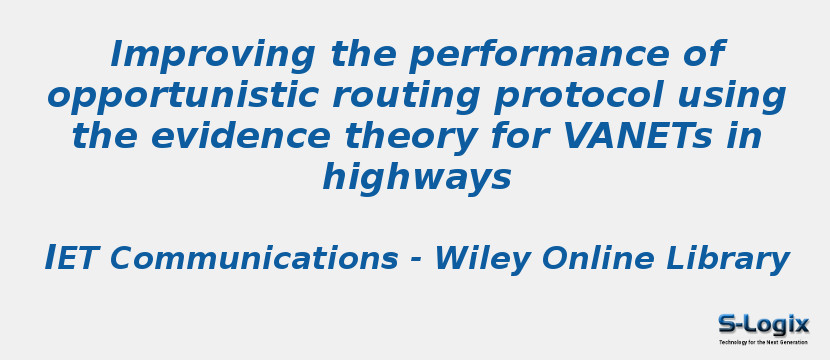Research Area: Vehicular Ad Hoc Networks
Vehicular ad-hoc networks (VANETs) despite their potential benefits, especially for intelligent transportation and safety systems face some important challenges. The main challenges are caused by high mobility of vehicles and dynamic environment. In addition, VANET channel is wireless and is extremely error prone. To overcome these problems, several routing strategies have been proposed in order to find paths with high reliability and low delay. One of these strategies is the opportunistic routing (OR) paradigm where its performance can be significantly affected by the method applied for prioritised transmission to the nodes within the relays set. The OR protocol proposed in this study is based on the Dempster–Shafer evidence theory. In this method, the source vehicle employs the packet advancement, vehicle density, and packet delivery probability as parameters for determining the appropriate vehicle as to the next hop. The number of vehicles participating in forwarding the packets is optimised using trust-based calculations. In addition, the source vehicle can schedule a set of relay nodes based on their degree of trust. Highway environment simulations suggest that compared to other published methods in the literature, the proposed method can improve routing performance in terms of all quality-of-service metrics.
Keywords:
Author(s) Name: Ali Azimi Kashani,Amir Masoud Rahmani,Mohammad Ghanbari
Journal name: IET Communications
Conferrence name:
Publisher name: Wiley
DOI: 10.1049/iet-com.2019.0473
Volume Information: Volume13, Issue20 December 2019 Pages 3360-3368
